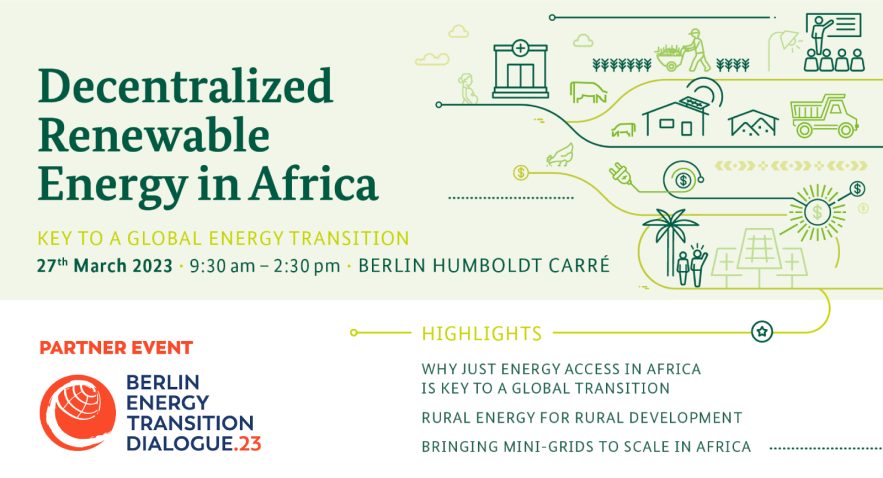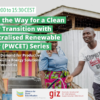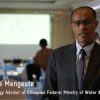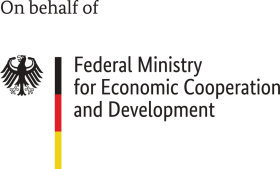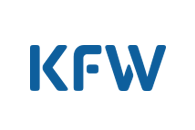Energy transition in Africa: Putting people in the driver’s seat – BETD 2023 Partner Event
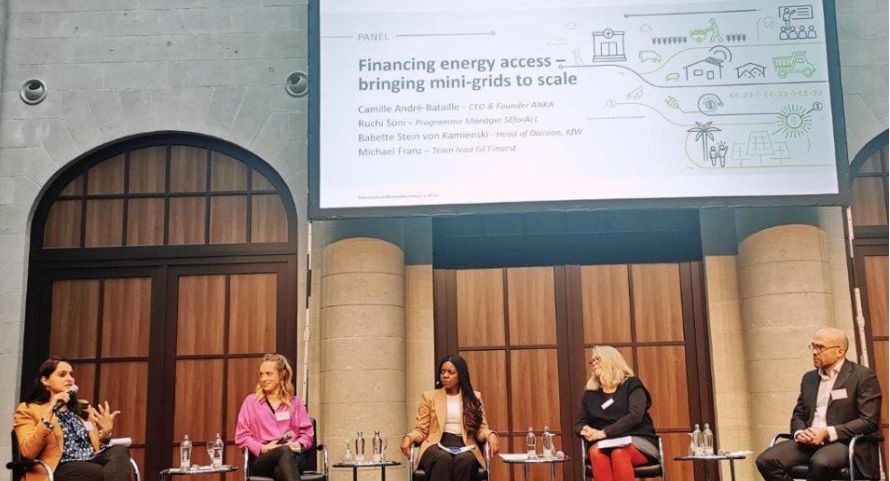
On 27th March, the Federal Ministry for Economic Cooperation and Development (BMZ) invited key stakeholders to Berlin. At the partner event of the Berlin Energy Transition Dialogue “Decentralised Renewable Energy in Africa – Key to a global energy transition”, more than 100 participants discussed approaches and successes on how all Africans can gain access to modern energy.
600 million Africans, 40 percent of the population, still have no access to modern energy. In rural areas, only 25 percent of the inhabitants have access to electricity. However, modern energy is a prerequisite for people to professionalise their agriculture, offer services and promote local value creation.
With the Agenda 2030, the global community has formulated a clear goal in terms of energy supply (SDG 7): All people should have access to affordable, reliable and modern energy. “The supply of sustainable energy is the key to development,” underlined Jochen Flasbarth, State Secretary at BMZ, right at the beginning of the conference. “Every year, 20 to 25 million jobs must be created for young people in Africa to be able to offer the young population prospects,” he added.
The conference had been organised by Green People’s Energy (GBE) as a partner event of the Berlin Energy Transition Dialogue (BETD) 2023. Despite the strikes at railways, public transport and airports, more than 100 representatives from the German Parliament as well as embassies, research institutes, foundations and non-governmental organisations discussed potentials, challenges and solutions for decentralised energy supply in Sub-Saharan Africa. The conference had two focal points: Firstly, on the opportunities of stand-alone systems for decentralised energy supply such as solar home systems (SHS) or solar irrigation systems, and secondly on mini-grids and their financing.
Great potential – enormous investment
The good news is: “Africa has huge potential for the use of renewable energies,” Jochen Flasbarth explained. “At the same time, the continent has a huge energy and power demand,” he added. Large investments are needed for this. Leaving people without energy access is not an option. “Energy is not just an SDG target. It is also a tool to achieve most of the other goals,” said Bärbel Höhn, Energy Commissioner of the BMZ in her keynote. After all, energy provides the basis for creating additional jobs and income, and thereby reducing hunger and poverty. Energy also enables better education, better health care and, above all, can improve the lives of women in many ways.
Against this background, BMZ supports multilateral and global projects, such as the multi-donor partnership Energising Development (EnDev) as well as GBE, which promote decentralised community projects and the necessary framework conditions – training, financing, supply chains – so that people can acquire and use renewable energy technologies. With this in mind, Thorsten Schäfer-Gümbel, GIZ Board Spokesperson, emphasised: “The greatest potential for transition in Africa lies in African people and their communities.”
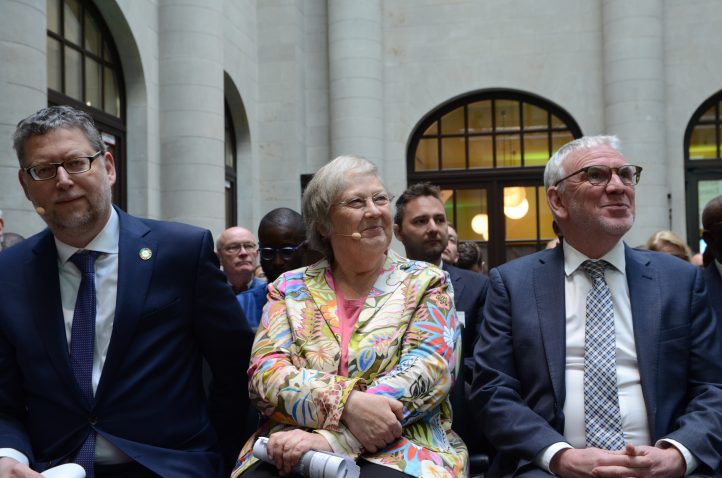
The African perspective
However, the challenges facing African countries and their governments are daunting for several reasons. For Uganda, the Permanent Secretary in the Ministry of Energy and Mineral Development, Irene Pauline Batebe, described the situation very vividly: “If we want to meet our electricity needs by 2040, we need to increase our generation capacity to over 50,000 megawatts of power”. Equally challenging is the goal of enabling up to 300,000 additional connections to the grid or mini-grids every year. In order for these investments to remain sustainable and for solar home systems (SHS), PV systems or mini-grids to supply electricity on a permanent basis, the maintenance of the systems is crucial. “Our country still lacks the technicians to do this,” she said. The consequences of the lack of maintenance are devastating, because 50 per cent of the SHS of public institutions, for example, are out of operation. “In the area of vocational education and training, GIZ projects such as Green People’s Energy luckily support us,” she added.
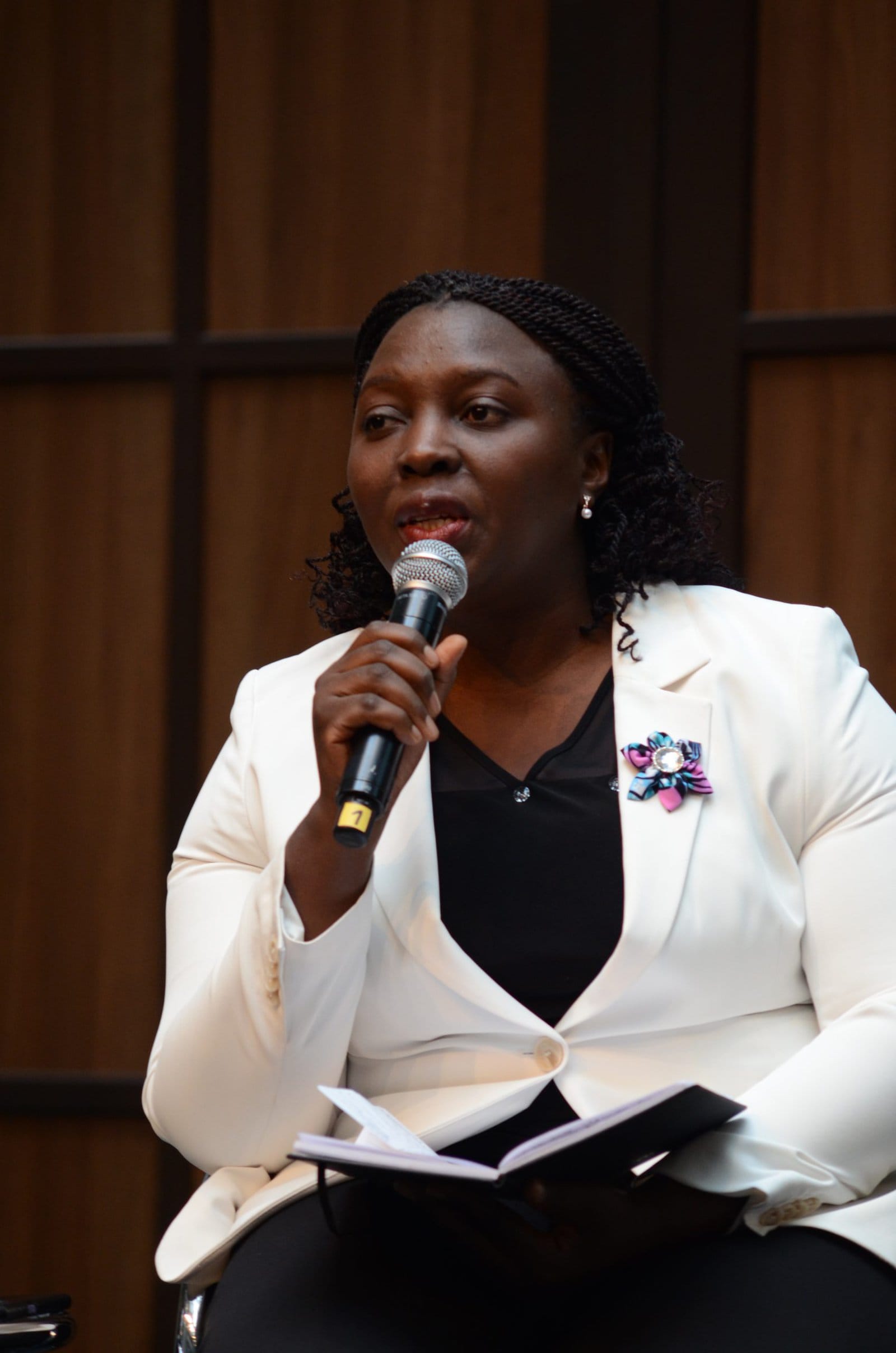
Both Uganda and Kenya have set big goals to create energy access for all citizens by 2030. However, the countries also need huge financial resources to achieve this. For Kenya, Isaac Kiva, Secretary for Renewable Energy at the Kenyan Ministry of Energy and Petroleum, described the starting point. As part of its Kenyan electrification strategy adopted in 2018, the government expected about 4.5 million connections to be installed. “We needed 2.7 billion US dollars for implementation, which of course we could not raise all at once”.
Despite the great potential in Africa, too little investment is flowing in, criticised Irene Pauline Batebe: “Only two percent of global investments in renewable energies are flowing to Africa.” In addition to this, the multitude of partners requires good coordination of funds by African ministries. Furthermore, the applications for some financial instruments, such as the Green Climate Fund, are challenging. “For me, it seems that this fund is very complicated. This leads some countries to not being able to apply,” said Bärbel Höhn. Only countries that are able to manage the bureaucratic effort are given access to the funds. “This is where we have to help the smaller countries,” she added.
Decentralised renewable energy: a development catalyst for local entrepreneurs
After these introductory talks, two panel discussions were on the agenda. The first was dedicated to the potentials of renewable energies for the productive use of energy. Bobby Gyesi’s SGA farm in Ghana is a good example of this. With the support of GBE, the family business was able to set up solar-based drip irrigation. “With this system, we can irrigate our fields all year round without leaving a CO2 footprint,” said Bobby Gyesi. Five direct and 20 indirect jobs have been created in the village as a result. While his company is prospering thanks to productive use, he criticises the lack of speed in rolling out solar technologies. “This is not so much because of our technical expertise, but rather because of access to financing,” he said.
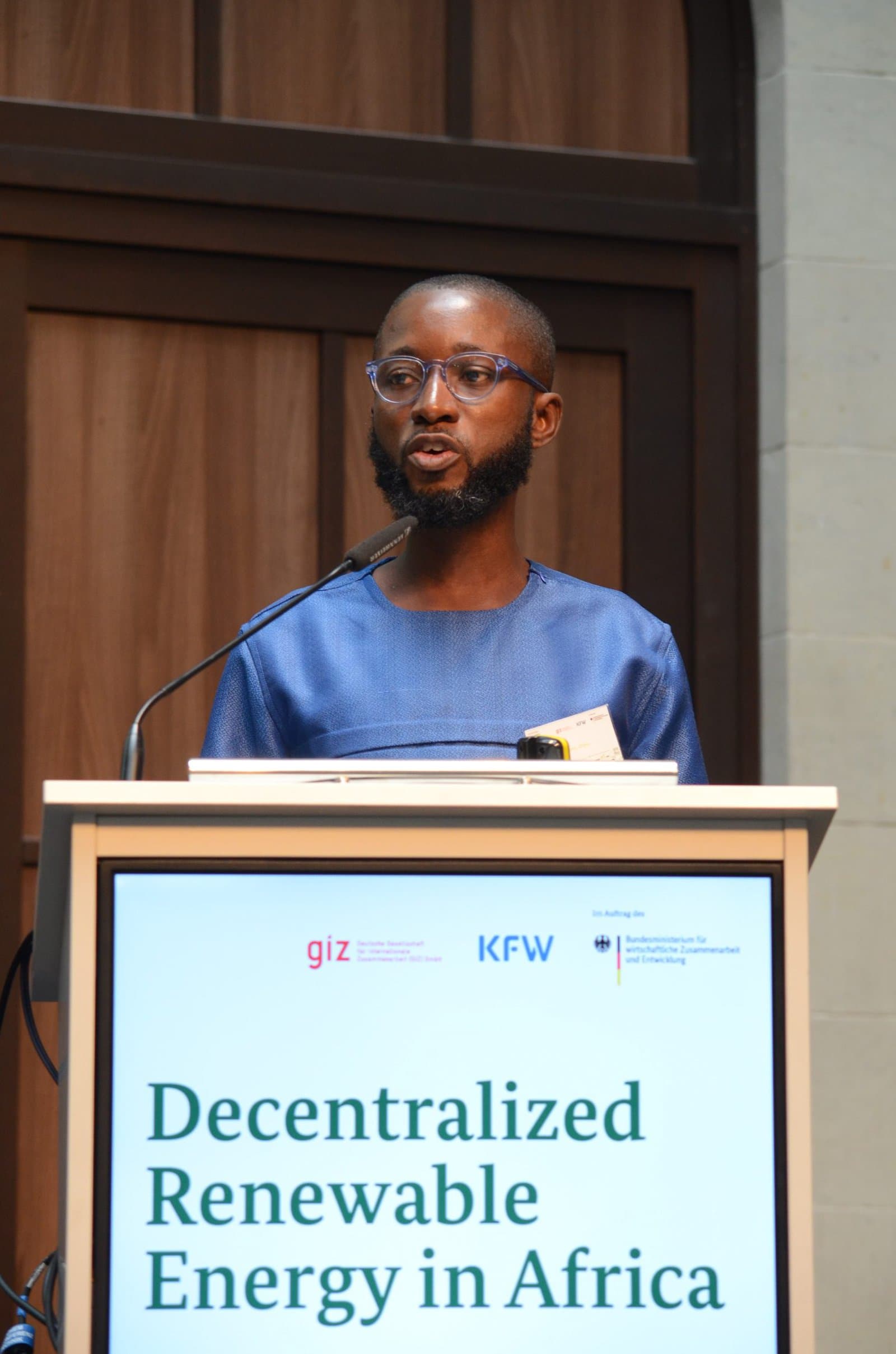
EnDev Head Alexander Haack agreed with Bobby Gyesi on this point. “Access to finance is probably one of the biggest bottlenecks,” he said. But the risks of suppliers and banks cannot simply be neglected, he added. One challenge is that many local banks in African countries shy away from the risk of financing. Thomas Duveau of the Access to Energy Institute pin-pointed the problem using the example of local Nigerian banks. “A local bank gives most loans risk-free to regional government institutions and earns good money from it. Bankers, on the other hand, are often arrogant towards rural businesses and only offer overpriced loans that ruin any business model,” he criticised.

So, what can be done? Governments, investors and companies as well as potential users of renewables face many barriers to financing. “Our analysis for Benin showed that many potential users, as well as banks and microfinance institutions, know little about the potential of renewable energy solutions,” said Razvan Sandru, head of GBE in Benin. At the same time, he said, it is risky for solar system providers to enter rural markets.
“I see our role as strengthening cooperation between the different actors in order to increase the market for energy access,” added Razvan Sandru. GBE Benin has therefore initiated partnerships between microfinance institutions and solar providers, he said. “The microfinance institutions have now realised that there is a market and clients and that they also pay back their loans,” he said. This work of building up trust takes a long time. And it cannot be done without minimising the risk of the partners in the beginning. GBE has promoted this in Benin with a results-based financing (RBF) programme that incentivises the granting of micro-loans to rural businesses for solar systems. This is working.
How to finance mini-grids in big-scale?
The second panel discussion specifically addressed the issue of financing mini-grids in order to be able to finance them on a large scale. What is clear is that mini-grids are often the most cost-effective way to electrify areas that the central grid does not reach. Yet consumer prices for electricity from the central grid are often lower because they are heavily subsidised around the world. Frustration among project developers is therefore high. “We cannot expect the world’s most vulnerable population to pay 345 times what we pay in northern countries,” Camille André-Bataille, founder and CEO of the private power utility ANKA, described her own experience. Here, she said, the private sector needs subsidies. “Financing our projects is the most challenging aspect of our work. Unfortunately, we are going round in circles with some donors and financiers”.
She is not the only one to criticise the inadequate access to funding, Michael Franz knows. He heads the European GET.invest programme, which is based under the umbrella of GIZ. The programme mobilises investments in energy projects, for example by helping project developers to meet the requirements of banks and international programmes. “We are currently tracking 210 financing instruments, just for energy in sub-Saharan Africa,” he said, asking: “How are project developers and companies supposed to find their way around that?”
However, Michael Franz emphasised progress, even if the scaling-up pace for mini-grids and energy projects is still too slow. “We know much better today how to regulate credit markets and what kind of financing is needed than we did three years ago,” he said. And there are new approaches to financing that aim to make funds available to projects more easily and quickly. Ruchi Soni is leading the Results-based Financing (RBF) programme of SEforALL. “To speed up financing, we are subsidising each mini-grid connection with currently 592 US dollars in our African partner countries,” she said. In this way, SEforALL wants to strengthen the confidence of investors and project developers as well as that of financiers in them.
Dialogue between project developers and financiers necessary
With 40 million in start-up capital, however, the programme can only support limited projects. This also applies to the CEI Africa Foundation, which was established in 2021 by KfW on behalf of the BMZ and is currently endowed with 60 million euros. Both share the goal of convincing other donors with their new approaches. “With the foundation, we can provide grant funding as well as commercial funding at the same time,” said Babette Stein von Kamienski, who sits on the supervisory board of CEI Africa. The foundation prioritises women-led businesses and has developed a triad of tools. Grants are designed to facilitate the launch of projects. If it achieves the predicted impact, CEI Africa can increase the funds. If the investments are sustainable, the foundation provides funds from the crowd-lending industry, with KfW giving a guarantee.
The lively discussion at the panel showed that there is definitely friction between project developers and financing institutions. For this very reason – the stakeholders agree – exchange is important, provided that both sides also listen. SEforALL, for example, has learned a lot since it began implementing the RBF for mini-grids with GIZ in Benin and has adapted its own financing approach based on consultations with project developers. “I did not expect a financing facility to listen so much to the private sector,” praised Camille André-Bataille.
Time to act
At the end of the event, Bärbel Höhn thanked all participants for coming and declared all those who stayed until the end winners: “The highlight of this conference was our last panel, because I have already listened to many financial experts and panellists, but I have never experienced such an engaged discussion group as we just had here,” said the BMZ Energy Ambassador.
However, the discussion also revealed a fundamental problem of financing. Before a last-mile market for renewables emerges, public institutions will have to provide the initial financing, Bärbel Höhn summed up. “Therefore, further funds have to be provided so that we can pay for these initial investments. In the end, this is the cheapest solution,” she said. What is clear is that the roll-out of renewable technologies needs to happen faster and more extensively in order to achieve a just energy transition and SDG 7.
